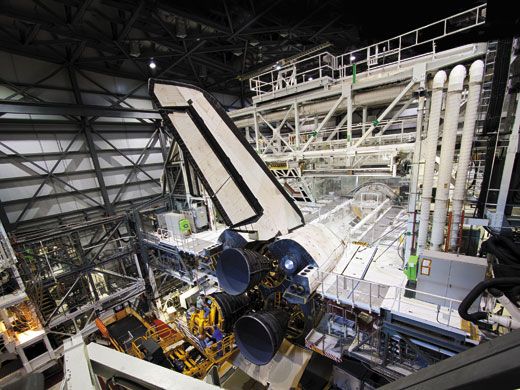A Preview of Discovery’s Arrival to the Smithsonian
NASA prepares its decommissioned space shuttles for delivery to the National Air and Space Museum
/https://tf-cmsv2-smithsonianmag-media.s3.amazonaws.com/filer/Fast-Forward-Discovery-631.jpg)
How do you prepare the most storied space shuttle for a second life on Earth? Discovery, which set a record by flying 39 missions, cumulatively spent 365 days in space and traveled 148,221,675 miles. It was also the shuttle piloted by the first female spacecraft pilot, Eileen Collins; the first orbiter to dock with the International Space Station; and the shuttle that ferried John Glenn back into orbit. In mid-April, Discovery is scheduled to be transported from the Kennedy Space Center to Virginia for permanent display at the Air and Space Museum’s Udvar-Hazy Center. But delivering a spacecraft requires more than bubble wrap and packing tape. The space center’s Orbiter Processing Facility-1, previously used to prepare shuttles for flight, has now become something of a chop shop. Technicians removed the spacecraft’s three main engines and last December (above) replaced them with replicas. (The engines will be reused for NASA’s new Space Launch System heavy-lift rocket.) Other parts, including the windows, will be given to eager engineers so they can study how materials and systems have fared after repeated exposures to space. National security requires that some communication boxes be removed from the flight deck. And hazardous chemicals, such as propellants, have been cleaned out. Once this decommissioning is complete, 45 workers will mount the 175,000-pound orbiter on the back of a modified Boeing 747 for the flight to the shuttle’s new home. The projected total cost for preparation and delivery: $26.5 million. (Thankfully, not C.O.D.)
/https://tf-cmsv2-smithsonianmag-media.s3.amazonaws.com/accounts/headshot/mark-strauss-240.jpg)

/https://tf-cmsv2-smithsonianmag-media.s3.amazonaws.com/accounts/headshot/mark-strauss-240.jpg)